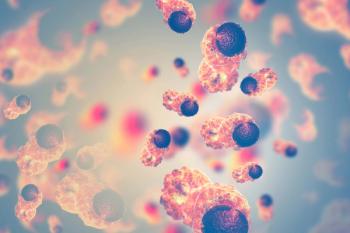
- ONCOLOGY Vol 22 No 14
- Volume 22
- Issue 14
Dexamethasone in Induction Can Eliminate One-Third of All Relapses in Childhood Acute Lymphoblastic Leukemia
The results of an international randomized trial found that the use of dexamethasone in the induction phase of combination chemotherapy led to a one-third reduction in the risk of relapse as compared with the standard corticosteroid, prednisone, translating into a significant benefit in terms of event-free survival in children with acute lymphoblastic leukemia.
The results of an international randomized trial found that the use of dexamethasone in the induction phase of combination chemotherapy led to a one-third reduction in the risk of relapse as compared with the standard corticosteroid, prednisone, translating into a significant benefit in terms of event-free survival in children with acute lymphoblastic leukemia. Dexamethasone was associated with a greater risk of severe side effects, mainly invasive infections; hence, more intensive clinical monitoring and, in particular, early antimicrobial therapy in patients should be implemented to preserve the advantage of using dexamethasone, rather than prednisone, as part of induction therapy, said Martin Schrappe, md, University Medical Center Schleswig-Holstein, Campus Kiel, Kiel, Germany, at the ASH meeting (abstract 7).
Following a prephase treatment regimen of prednisone and intrathecal methotrexate, a total of 3,655 children (ages 1 to 17) with acute lymphoblastic leukemia were randomized to receive induction therapy consisting of either prednisone (60 mg/m2/d) or dexamethasone (10 mg/m2/d) in addition to vincristine, daunorubicin, and l-asparaginase (Elspar) combination therapy. Postinduction therapy was also given to patients.
Six-year event-free survival reached 84.1% in patients who received dexamethasone as compared with 79.1% of those who received prednisone in the induction phase. The 6-year cumulative incidence of relapse was 11% and 18% for patients randomized to dexamethasone and prednisone, respectively. The difference between the two groups was observed for bone marrow relapses (8% vs 12%), central nervous system relapses (2% vs 4%), and other relapses (2% vs 3%) in dexamethasone as compared with prednisone.
Higher toxicity was seen in those treated with dexamethasone. The cumulative incidence for death in the induction phase was 2% for dexamethasone compared with 0.9% for prednisone; however, the cumulative incidence of death during remission was similar between the two treatment groups (2% for dexamethasone and 1.6% for prednisone).
Articles in this issue
about 17 years ago
The Absent-Minded Professor: An Unusual Complication of Melanomaabout 17 years ago
Inflammatory Breast Cancer: A Complex Diseaseabout 17 years ago
Defining the IBC Phenotypeabout 17 years ago
Acupunctureabout 17 years ago
Two Orphan Drug Designations Granted for Reviroc in NHLabout 17 years ago
NDA Submitted for Trabectedin to Treat Relapsed Ovarian Cancerabout 17 years ago
FDA Considers Update for Tanning Bed Labelsabout 17 years ago
FDA Approves New Imaging System to Enhance Cervical Cancer DetectionNewsletter
Stay up to date on recent advances in the multidisciplinary approach to cancer.


















































































